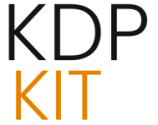The Definitive Guide to Creating an Unforgettable Author Media Kit

You’ve written the book. You’ve navigated publishing, distribution, and maybe even the initial launch chaos. Now comes the crucial, often overlooked step: professional presentation. If you want to land podcast interviews, secure speaking engagements, or earn media coverage, you need a powerful, centralized tool ready to go. That tool is your Author Media Kit (or Press Kit).
An author media kit is more than just a collection of documents; it is your professional calling card in the media landscape. It streamlines the process for busy producers, journalists, and event organizers, ensuring they have everything they need to feature you accurately and quickly. Here is how to build a comprehensive kit that demands attention.
What Exactly is an Author Media Kit?
Simply put, an author media kit is a professionally packaged digital document (usually a well-organized PDF) containing all the essential marketing and biographical information necessary for a third party to write about you, interview you, or promote you. Its primary goal is efficiency—it answers every preliminary question a potential partner might have before they even have to ask.
In today’s content-driven world, expecting a journalist to hunt through your website for your bio or search social media for a usable photo is asking for a pass. A well-prepared kit guarantees control over your narrative and significantly increases the likelihood of securing coverage.
The Essential Components of Your Author Media Kit
Your media kit should be structured logically, often organized by tabs or clear headings within the PDF document. Aim for a clean, branded design that reflects the tone of your writing.. Find out more about How to create a professional author media kit.
1. The Professional Bio: Tailored for Every Need
One size never fits all in biography. You need versions ready for immediate deployment:
- The Short Bio (50–75 words): Ideal for podcast show notes, Twitter announcements, or quick introductions. Focus on your biggest achievement and your book’s genre.
- The Medium Bio (150–200 words): Suitable for event programs or standard article inclusions. This allows for mentioning genre, key credentials, and the scope of your current book promotion.
- The Long Bio (300–400 words): Use this for your official website “About” page or in-depth interviews. Include more context about your writing journey, expertise (if non-fiction), and perhaps a personal anecdote.
2. High-Resolution Imagery
This is non-negotiable. Always provide images in high resolution (at least 300 DPI) suitable for print use.. Find out more about Essential components of an author press kit PDF guide.
- Author Headshot: Include at least two versions: a professional, forward-facing standard shot, and perhaps one environmental or lifestyle shot that conveys personality. Ensure images are provided in both color and black & white formats.
- Book Cover Art: Provide high-resolution (CMYK preferred for print) JPEG or PNG files of the primary book cover, ideally with a white background or transparent background (PNG). Include covers for all currently marketed titles.
- Branding Assets: If you have a personal logo or specific series branding elements, include vector files or high-res PNGs.
3. Book/Product Details & Metadata
Make it easy for retailers and reviewers to catalog your work correctly.
- Full Book Synopsis: A compelling, one-paragraph hook followed by a more detailed 250-word summary.. Find out more about Media kit guide for landing podcast interviews tips.
- Key Metadata: ISBNs (Hardcover, Paperback, Ebook), Page Count, Publication Date, Genre/Categories (BISAC codes if applicable), and Retail Price.
- Quick Facts: List 3–5 unique selling propositions (USPs) for the book (e.g., “A Reese Witherspoon Book Club Pick,” “Bestselling Author of X,” or “Features never-before-seen historical documents”).
4. Media Quotes and Testimonials
Social proof is incredibly persuasive. Gather positive feedback from credible sources.
- Professional Endorsements: Quotes from well-known authors, industry experts, or reputable reviewers (Kirkus, Publishers Weekly, etc.).
- Reader Testimonials: Select 3–5 powerful, short quotes from beta readers or early reviewers that capture the essence of why readers love the book.
5. Interview Talking Points and FAQs. Find out more about Digital author press kit checklist strategies.
Save the interviewer time by preemptively answering common questions.
- Top 5 Interview Questions: Prepare concise, thoughtful answers regarding your inspiration, writing process, research challenges, or the thematic core of your latest work.
- Author Expertise (Non-Fiction): Clearly define your credentials that qualify you to write on the subject matter.
6. Contact and Connectivity Information
Ensure clear pathways for follow-up.
- Primary Contact: Provide the email address you monitor most closely for media inquiries. If you use a publicist or agent for media contact, list their details prominently.
- Social Media Handles: List the handles for your main platforms (e.g., Instagram, X/Twitter, LinkedIn) and include direct, active links.. Find out more about How to create a professional author media kit overview.
- Website/Landing Page: The URL where the media kit itself is hosted or where more resources can be found.
Formatting and Presentation: Making the Kit Shine
The design of your media kit speaks volumes about your professionalism. It should look polished and intentional.
Go Digital, Go PDF
While older press kits might have included physical press releases, the modern standard is a downloadable PDF document. PDFs maintain formatting across all operating systems and are easy to save, print, or email.
Branding Consistency. Find out more about Essential components of an author press kit PDF definition guide.
Your media kit must align visually with your book covers and your author website. Use consistent fonts, color palettes, and imagery. If your book is gritty noir, the kit shouldn’t feature pastel watercolors.
Keep It Concise and Organized
Media professionals are busy. Aim for a concise kit—ideally between 4 to 8 pages maximum. Use clear headings, ample white space, and bullet points. Nobody wants to read a dense wall of text when looking for a photo resolution.
Distribution Strategy: Where Should Your Kit Live?
Having a stunning kit is only half the battle; people need to find it.
The Dedicated Media Page
Create a specific, easily navigable section on your author website labeled “Media,” “Press,” or “For the Media.” This page should feature a prominent, clearly labeled link (e.g., “Download Full Media Kit PDF Here”). Ensure this link opens the PDF directly or downloads it immediately.
Proactive Outreach
Never wait for someone to ask for your bio. When pitching yourself to a podcast or a reviewer, mention that your comprehensive media kit is linked directly in your email signature or attached for convenience.
Use It for Conferences and Events
If you are applying to speak at a conference or festival, submit your media kit as part of your speaker proposal package. It shows you are serious, organized, and ready for promotion.
Conclusion: Taking Control of Your Narrative
Creating a comprehensive author media kit requires initial effort, but it pays dividends every time you seek publicity. It’s an investment in efficiency, professionalism, and long-term branding. By providing high-quality, easily accessible materials, you remove barriers for anyone wanting to feature your work, transforming potential opportunities into confirmed media appearances. Start building yours today—your future interviewer will thank you.





